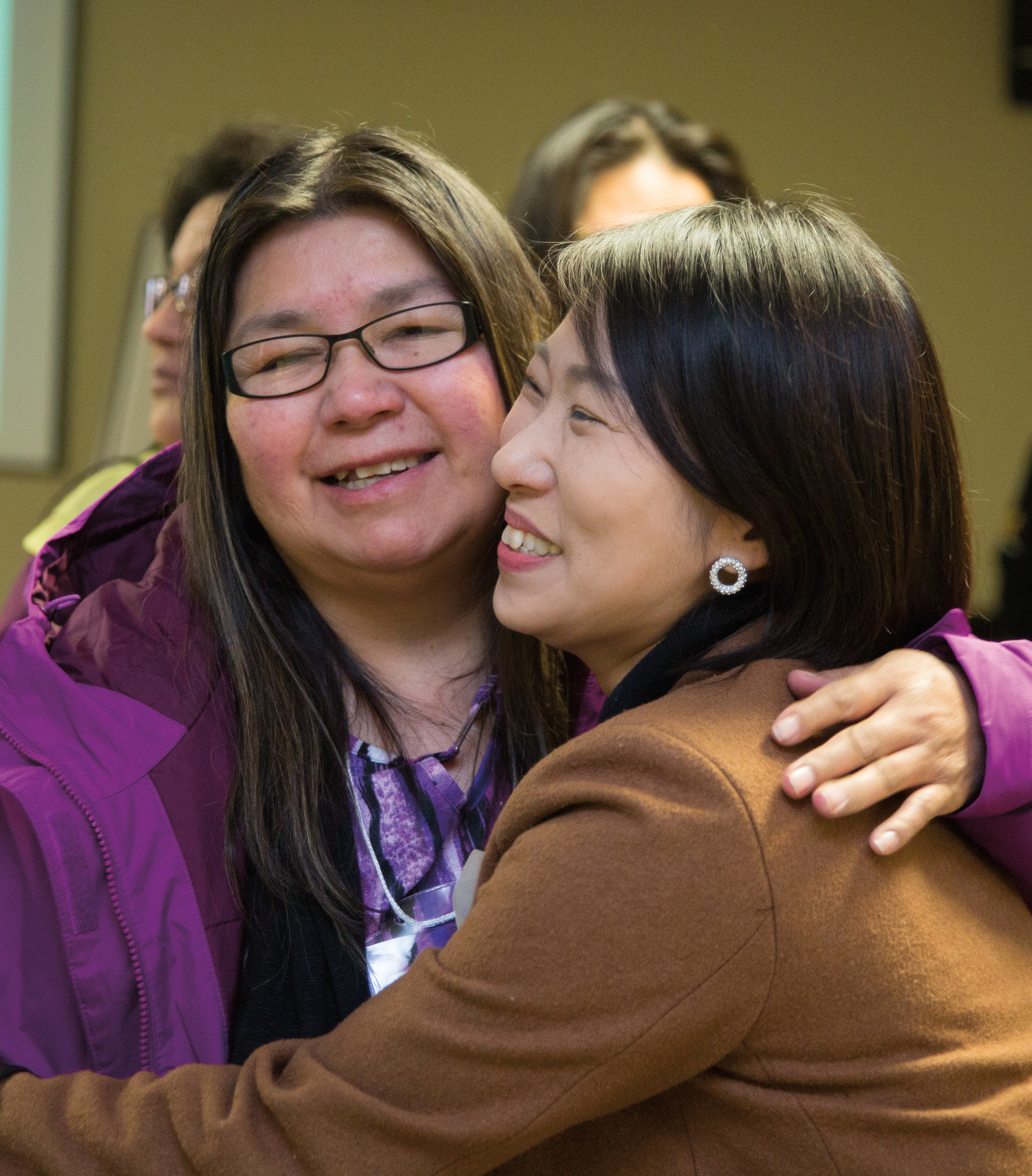Photo Above: Cree students and a teacher at the All Saints Indian Residential school, Lac La Ronge, Sask., 1945. (Courtesy of Library and Archives Canada.)
Editor’s Note: The following are excerpts from Honouring the Truth, Reconciling for the Future: Summary of the Final Report of the Truth and Reconciliation Commission of Canada, 2015
Residential schools are a tragic part of Canada’s history. But they cannot simply be consigned to history. The legacy from the schools and the political and legal policies and mechanisms surrounding their history continue to this day. This is reflected in the significant educational, income, health, and social disparities between Aboriginal people and other Canadians . . . the intense racism some people harbour against Aboriginal people and in the . . . discrimination Aboriginal people regularly experience in this country. It is reflected too in the critically endangered status of most Aboriginal languages.
Aboriginal languages are a “tangible emblem of group identity” that can provide “the individual a sense of security and continuity with the past. . . . Maintenance of the language and group identity has both a social-emotional and a spiritual purpose.”
Residential schools were a systematic, government-sponsored attempt to destroy Aboriginal cultures and languages and to assimilate Aboriginal peoples so that they no longer existed as distinct peoples. English and, to a far lesser degree, French were the only languages permitted to be used in most schools. Students were punished—often severely—for speaking their own languages.
. . . The United Nations Declaration of the Rights of Indigenous Peoples . . . recognizes that “Indigenous peoples have the right to revitalize, use, develop and transmit to future generations their histories, languages, oral traditions, philosophies, writing systems and literatures, and to designate and retain their own names for communities, places and persons.”
Many of the almost 90 surviving Aboriginal languages in Canada are under serious threat of extinction. In the 2011 census, 14.5 per cent of the Aboriginal population reported that their first language learned was an Aboriginal language. In the previous 2006 census, 18 per cent of those who identified as Aboriginal had reported an Aboriginal language as their first language learned, and a decade earlier, in the 1996 census, the figure was 26 per cent. This indicates nearly a 50 per cent drop in the 15 years since the last residential schools closed.
If the preservation of Aboriginal languages does not become a priority both for governments and for Aboriginal communities, then what the residential schools failed to accomplish will come about through a process of systematic neglect.
The Commission believes that a multi-pronged approach to Aboriginal language preservation . . . will require full, good-faith consultation, which recognizes that although Aboriginal communities have the necessary knowledge, particularly among their Elders, to preserve their own languages, additional support is needed.
Calls to Action
14)
We call upon the federal government to enact an Aboriginal Languages Act that incorporates the following principles:
i.
Aboriginal languages are a fundamental and valued element of Canadian culture and society, and there is an urgency to preserve them.
ii.
Aboriginal language rights are reinforced by the treaties. . . .
iv.
The preservation, revitalization, and strengthening of Aboriginal languages and cultures are best managed by Aboriginal people and communities.
Read the entire TRC report
•••••
